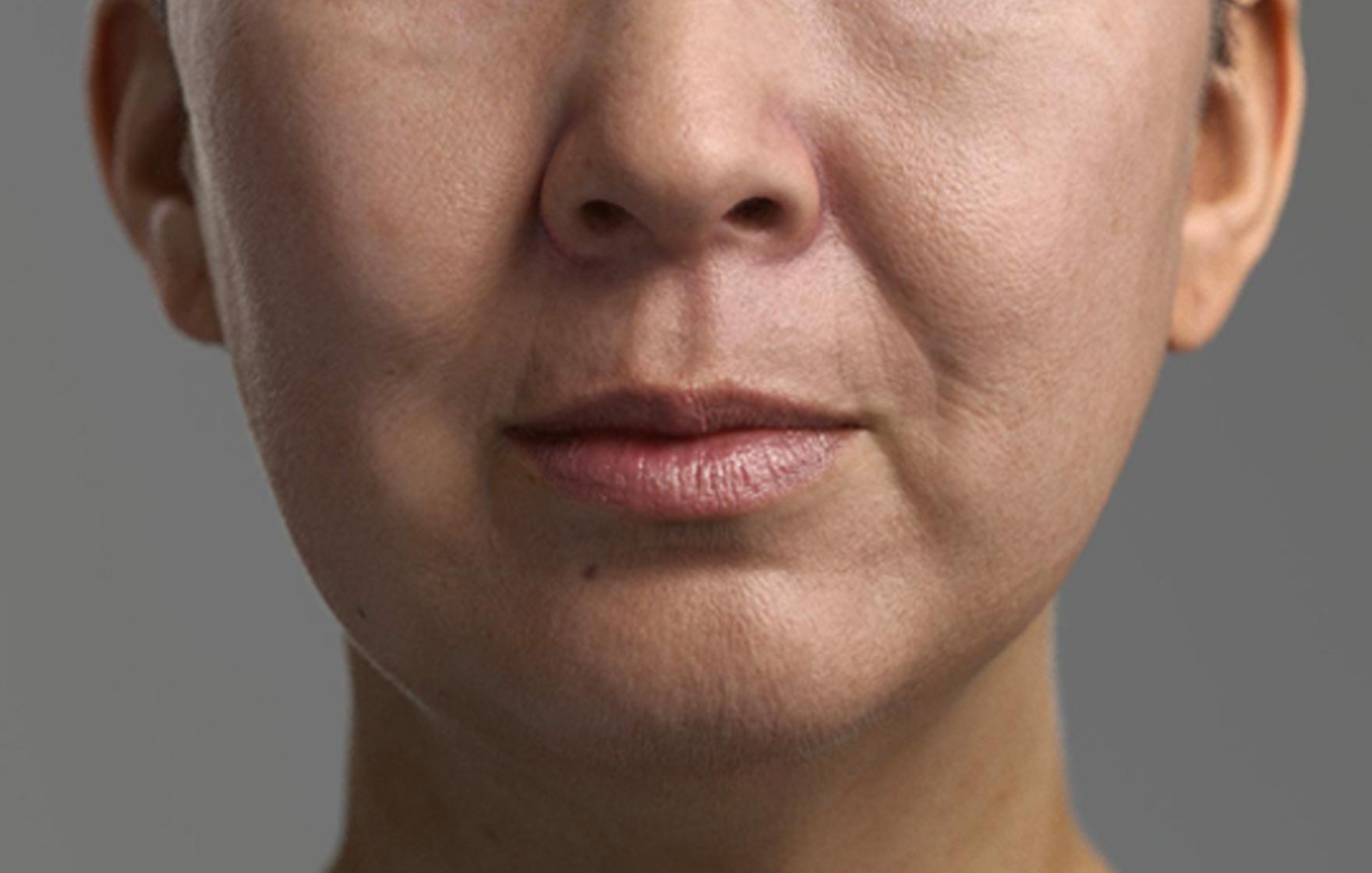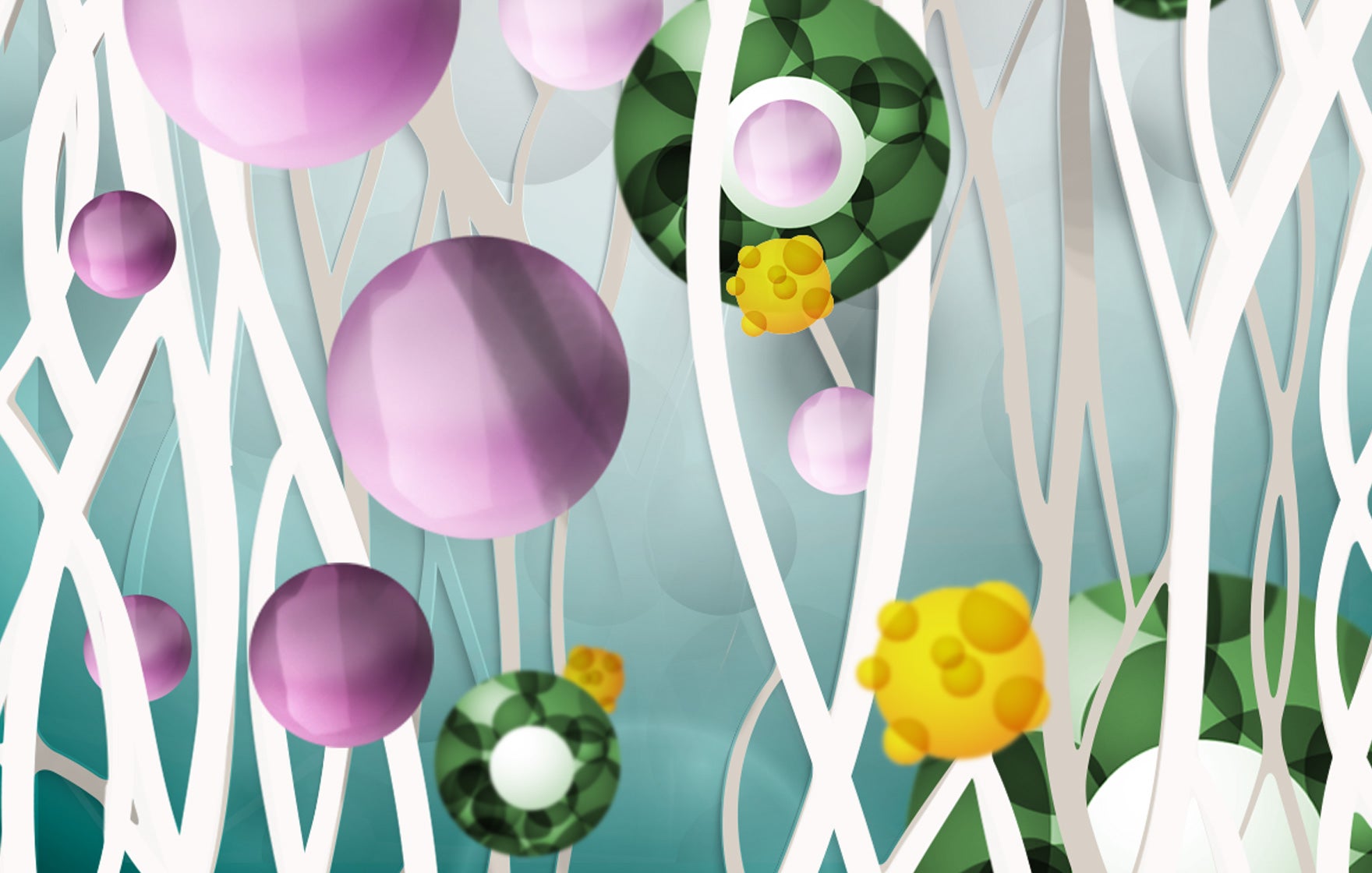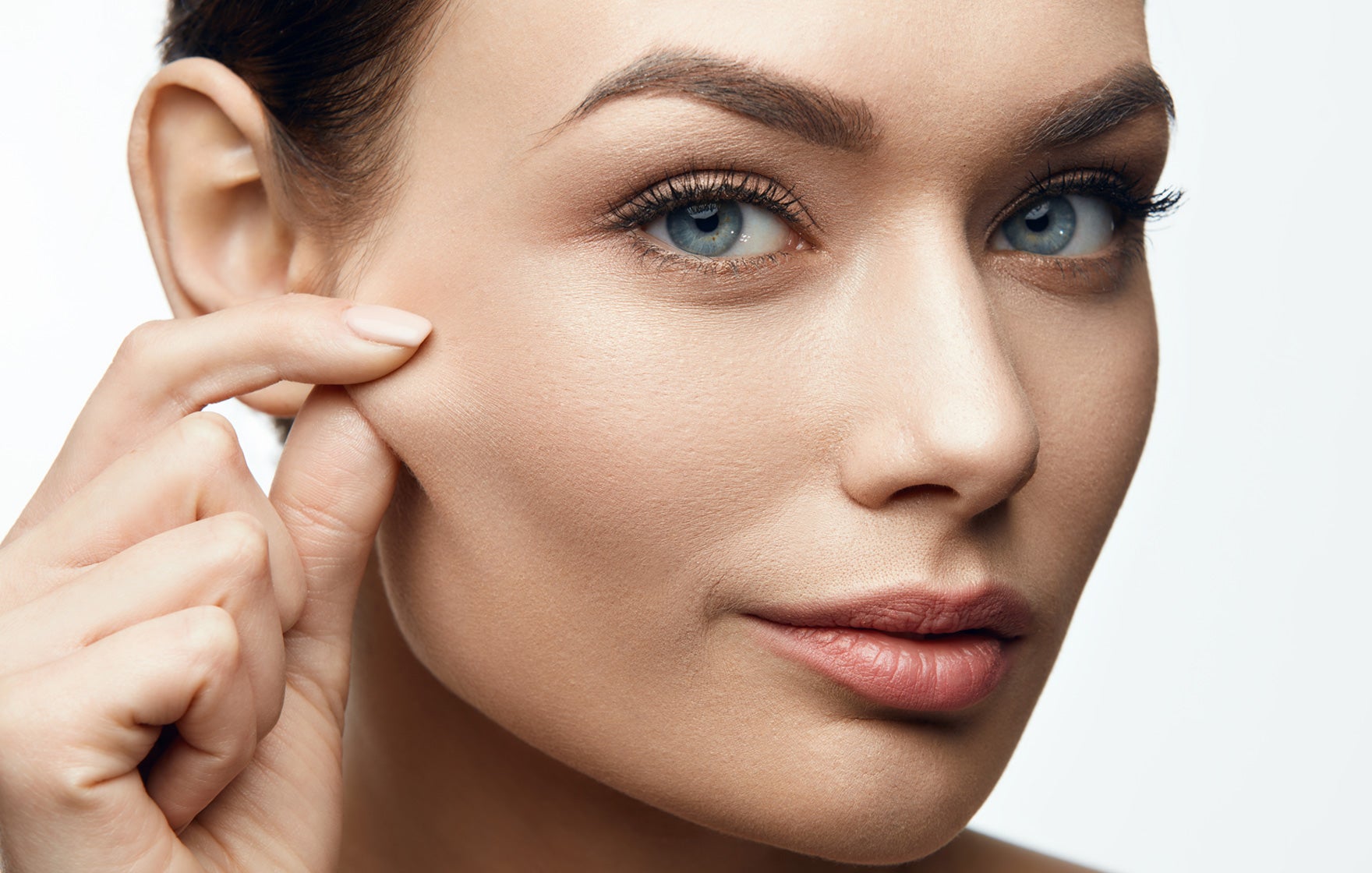
Judging from the enormous amount of powders, pills, bars, drinks, creams, lotions and aesthetic collagen treatments available, there is no doubt that collagen is in vogue. There are many promises, but can these products and collagen treatments live up to their claims and really do anything about natural collagen formation? Or skin laxity? The answer to these questions is actually quite unknown, despite the veritable flood of information about collagen on the internet. Continue reading to find out more.
The question is – what actually happens with natural collagen as we age?
Many of the collagen treatments and products promise to increase your natural collagen formation, decrease skin laxity, give you firm skin and lots of other nice things that will make you look younger and fresher.
Most likely, you don’t want to try a huge number of products for yourself to find out if they increase the natural collagen formation in your skin or not. Most people don’t have the time – or wallet – to do that.
A good idea is instead to learn what happens with natural collagen in the skin as we age. Once you know that, it will be easier to understand whether a certain collagen treatment works or not – or whether it has the effect on your skin that you are after.
How do you evaluate the effect of collagen treatments?
Among all the information on the internet about collagen, there are descriptions about natural collagen formation and how it works in the skin, how it can reduce skin laxity and restore firm skin. However, most information is simplified. It might not make you any wiser as to why a certain collagen treatment or product would be better at decreasing skin laxity and make you look younger than another product.
In this article, we will therefore expand the argument a bit and not only describe what happens with natural collagen in the skin as we age but also describe what actually happens (without too much simplification). Most likely, this will be new information that will be more helpful than the simplified explanations.
The natural collagen in our skin forms a three-dimensional network
The outermost layer of our skin is called the epidermis. Below this layer lies the dermis, which provides support and structure to the skin, including the epidermis. In the dermal layer we find what is called the extracellular matrix, a “scaffold” made of different proteins. The most abundant protein in the extracellular matrix is collagen type I. In fact, 90% of the dry weight of human skin is collagen type I. It is thus clear that collagen is immensely important for the skin. Other types of collagen in the skin are collagen type II, III and IV. Together, they form a three-dimensional structural network (the extracellular matrix) that provides support and helps the skin retain its elasticity and hydration.1
The natural collagen in our skin is produced by a kind of cell called fibroblast. With age, the fibroblasts cannot produce natural collagen as efficiently as before, leading to thin skin and structurally weakened skin, skin laxity and a decrease in skin quality.2,3,4
More specifically, the natural collagen in the skin becomes fragmented and frayed. The fragmented collagen cannot be incorporated in the extracellular matrix. Instead, it accumulates and causes defects in the three-dimensional network.1
The typical explanation of natural collagen and aging
This is more or less the kind of information you often get when reading about what happens with natural collagen as we age. It easily leads to the conclusion that as the fibroblasts age, they cannot produce as much collagen as before. And therefore, it could be a good idea to eat collagen supplements. Or perhaps try a collagen treatment that damages existing collagen, by heating the dermis (IPL, radiofrequency, fractionated lasers).5 Or by removing the top layer of the skin (peels, ablative lasers) to induce skin renewal and collagen formation.1 The overall purpose of these collagen treatments is to achieve a controlled tissue damage to induce a wound healing response and thereby renew the skin and reduce skin laxity.
However, the idea of aging fibroblasts that cannot produce enough natural collagen is not entirely correct. Therefore, it could easily happen that you try a collagen treatment or collagen supplement that will not give you the effect you want for your skin, such as reduced skin laxity, because you base your decision on assumptions that don’t exactly correspond to what happens in the skin.
Old fibroblasts are almost as good at collagen formation as young fibroblasts
The aging process is to a large extent still a mystery to science. The explanations often focus on genetics and the cell itself. With time, the cell has exhausted its ability to replicate itself (intrinsic aging). Or external factors, such as excess sun exposure, damage the cells, leading to a functional impairment (extrinsic aging). In other words, with time, the fibroblasts lose their ability of collagen production either due to intrinsic or extrinsic aging.1
The problem with this theory is that it is not really correct when it comes to fibroblasts. How do we know? Scientists have cultured fibroblasts from both severely sun damaged skin as well as sun-protected skin from people older than 80 years. It turned out that the natural collagen formation of fibroblasts taken from sun damaged skin was indistinguishable from the collagen formation of fibroblasts from sun protected skin. They were equally as good at collagen production.1
Moreover, when scientists studied fibroblasts from people older than 80 years, it turned out that their fibroblasts only had a modest reduction in their capacity to produce collagen compared with fibroblasts from individuals under the age of 30.1
The conclusion is, even though our fibroblasts get older, they are still really good at collagen formation. The question is then – why don’t they? Why don’t fibroblasts in aged or sun damaged skin produce as much collagen any longer as fibroblasts in younger or sun-protected skin? If our fibroblasts are so good at collagen formation, no matter their age, then why do we end up with skin laxity, wrinkles and folds?
When fibroblasts collapse, they produce less natural collagen
The explanation can be found not in the cells themselves, but in their environment, the extracellular matrix. The natural collagen in our skin is very long-lived. On average it takes about 30 years to degrade. In young and healthy skin, the amount of enzymes that breaks down collagen is extremely low, and therefore, collagen degrades very slowly. However, as collagen ages, it starts to fragment. Unfortunately, the fragmented collagen cannot be incorporated into new collagen fibers. In addition, as our skin has such low levels of degrading enzymes, this fragmented collagen cannot be broken down efficiently. Instead, it starts to accumulate within the extracellular matrix. And then, bad things start to happen.1
In young and healthy skin, receptors on the fibroblast surface attach to the collagen in the extracellular matrix. A simplified explanation is that this attachment stretches the fibroblasts. When the fibroblasts are stretched, they produce more collagen and less degrading enzymes. But when there is lots of fragmented collagen in the extracellular matrix, the fibroblasts cannot attach to the matrix and instead of being stretched, they collapse. And when they collapse, not only do the fibroblasts produce less natural collagen, they also start to produce more degrading enzymes.1
The balance has shifted in a very negative direction with less collagen formation and increased collagen breakdown, leading to skin laxity and thin skin. Not because there is anything wrong with the fibroblast cells or due to a lack of collagen. In fact, the skin is still full of collagen, it is just that it is fragmented and can’t be incorporated effectively in the extracellular matrix.1
To summarize, the problem is not the fibroblasts’ ability to produce collagen. Fibroblasts from old or sun damaged skin are almost as good at natural collagen formation as fibroblasts from young and healthy skin. Also, there is no lack of collagen as such, as there is an abundance of fragmented natural collagen in the matrix.
To increase the stretch of the fibroblasts, so that they can work properly and stop producing degrading enzymes, a more efficient strategy could be a collagen treatment that restores the skin’s inner structure – the extracellular matrix.
As mentioned above, there are collagen treatments that damage the natural collagen in the dermis and thereby induce an inflammatory wound healing response. The more damage, the more skin renewal, but also a higher risk of side effects.
Collagen stimulators to improve the appearance of aging skin and skin laxity
Instead of damaging the dermis, another option is to stimulate the natural collagen formation directly with a so-called collagen stimulator.
The first and extensively studied collagen stimulator is Sculptra. Sculptra contains microparticles of poly-L-lactic acid, PLLA. PLLA is a biodegradable substance that has been used for more than three decades in medical implants and dissolvable stiches.6,7 With biodegradable means that the PLLA can be dissolved and eliminated by the body. When microparticles of PLLA are injected into the skin over a larger area, they have been shown to gradually stimulate the skin’s own natural collagen formation, without causing a wound healing response.6,8-11
One unproven hypothesis is that the stimulatory effect on natural collagen formation could be due to that the microparticles by their volume stretch the dermis and thereby enable the fibroblasts to resume their normal function. This is, as mentioned, a hypothesis that has not been proven. What is clear though is that Sculptra has a substantial effect on collagen formation. The treatment provides gradual and natural-looking results with, on average, a 66% increase in collagen type I after just 3 months.12
This collagen treatment has also proven to be long-lasting by improving the appearance of wrinkles up to at least 25 months after the last treatment.13
Understanding what happens with natural collagen leads to better decisions
What collagen treatment is best for you depends on the results you are looking for. Some collagen treatments have more visible results than others. Now that you know what actually happens with natural collagen in the skin as we age, it will hopefully help you make better decisions. If you are considering an aesthetic treatment for aging skin or skin laxity, remember to always consult a qualified healthcare practitioner.
Read more about how Sculptra® works and what it can do for your skin in this article.
References
- Fisher GJ et al. Arch Dermatol 2008;144(5):666–72.
- Farage MA et al. Adv Wound Care (New Rochelle) 2013;2(1):5–10.
- Quan T and Fisher GJ. Gerontology 2015;61(5):427–34.
- Werschler WP et al. J Clin Aesthet Dermatol 2015;8(10 Suppl):S2–S7.
- Quan T, Wang F, Shao Y, et al. J Invest Dermatol. 2013 Mar;133(3):658-667.
- Stein P et al. J Dermatol Sci. 2015;78(1):26–33.
- Lowe NJ. J EurAcadDermatolVenereol. 2006: 20(1):2-6
- Goldberg D et al. Dermatol Surg 2013;39(6):915–22.
- Vleggaar D et al. J Drugs Dermatol 2014;13 (4 suppl):s29–31.
- Moyle GJ et al. HIV Med 2004;5(2):82–7.
- Bohnert K et al. Plast Reconstr Surg 2019;127(4):1684–92.
- Goldberg D, Guana A, Volk A, Daro- Kaftan E. Dermatol Surg. 2013;39(6):915-922.
- Narins RS et al. J Am Acad Dermatol 2010;62(3):448–62.


